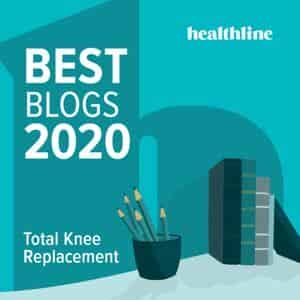Update - I am 5 months today from my left TKR. When I last met with my surgeon (5 1/2 weeks ago), he gave me a steroid shot and told me to rest for a week or so before reintroducing activity. I, for the most part, did that. The good news is I have made progress on strengthening as the shot definitely appeared to interrupt the perpetual inflammation I had in my knee and allowed me to do more.
The bad news is, of course, the shot did nothing to change the mechanics of what I feel in my knee as I begin to bend it. As a hobby, I now let people place their hand on the side of my knee and they feel the catching, popping, crunching just so they get a "feel" (hah, see what I did there) for what I am experiencing. As expected, my inflammation is getting progressively worse again. Indeed, I still 10000% believe the implant is either oversized or somewhat mal-positioned which causes it to irritate the muscles/tendons/nerves around it with every step. Indeed, it actually impinges the movement of my knee on first bend so I am perpetually not lifting my foot high enough and often catch the toe of my shoe (I really am a fall waiting to happen).
I really think there are a few categories of knee replacements similar to this:
1. The "Ideal Regular" folks - these are the people who go through the usual 6-12 week recovery and feel pretty good about where they are at post that. Yes, their "full" recovery still takes a year, but at 3 months or so they are probably 80-85% and they slowly get that last 15-20% over the next 9 months. Honestly, this is MOST of the folks I know who've had knee replacements.
2. The "Slow Regular" folks - This is similar to group 1 above, but for whatever, reason, everything seems to take longer. It could be due to any number of things. Their progress is the same pattern as the "ideal" group, but at least one or every phase takes longer. "Full" recovery could be two years...maybe even a little more.
(Note: Either of the two groups above could still have minor lasting items like "more pain when it is cold" or "a little stiff in the morning", etc.)
3. The "Outright Failure" folks - These are folks who have a significant issue. This is often immediate or happens within the first few months. An infection might be involved which could lead to a one or two-stage revision. Sometimes a lot of time is spent fighting the infection before the inevitable revision for these people.
4. The "Moderate Material Issue" folks - These are folks whose knee replacement doesn't "appear" to warrant a replacement (i.e. the old xray shows "everything is ok"), but they still have a material issue (pain, range of movement, gait, whatever) at say, post 3-6-12 months (or longer...maybe much longer). The "Slow regular" folks might "feel" like they are in this group, but in reality the "material issue" folks have a real root cause for their issue beyond the "normal" recovery aspects. My GUESS is that the vast majority have an issue introduced by the surgeon. This could be soft tissue, bone, or implant-related. Having watched WAY too many TKR surgical videos it is VERY EASY for me to see how this happens (even for very experienced surgeons like mine - thousands of TKRs). As an example, an implant that is slightly mis-aligned or a little too big or too small will look OK on an xray (which generally only shows gross issues), but may result in material issues. In some cases your body (a miraculous work of God!) might "adapt" to this...maybe fully or perhaps just partially. In other cases, you never really adapt and are faced with either a.) living with it, or b.) rolling the dice on a revision.
Right now, I am putting myself in the "moderate issue" camp. I say this because of the nature of how my knee and replacement feel at 5 months out...which is very similar to how it felt the first week or two after the surgery. I am definitely worse than before the surgery. The infection, etc. did delay what I'll call the "normal" aspects of my recovery, but the basics of the implant just seem and feel materially off to me...or the soft tissue was damaged much more significantly. Heck, when I look at the CT and xray I think even I can see mal-positioning. So, what do I do now? As of today, I am in the "wait to see if my body will really adapt enough" around this. I see my surgeon again in about another 10 days. I suspect he will say the same thing he said last time. He was hopeful I would be 90% better by time I saw him - in reality, I would put it at 10%...maybe. I may ask for another steroid shot just to allow me to push through some of the discomfort/catching to improve the "adaptation" process. If he doesn't have any answers, I suspect I will be seeking a second (and possibly third) opinion from docs specializing in revision.
Stay tuned!
 United States
United States




